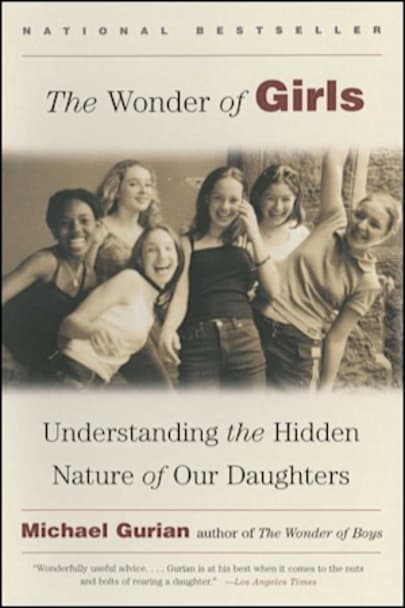Michael Gurian, whose national bestseller The Wonder of Boys presented a radical and enlightening view of parenting sons, now offers a groundbreaking approach to raising daughters. In The Wonder of Girls, Gurian, himself the father of two girls, provides crucial information for fully understanding the basic nature of girls: up-to-date scientific research on female biology, hormones, and brain … hormones, and brain development and how they shape girls’ interests, behavior, and relationships.
He also offers insight into a culture mired in competition between traditionalism and feminism and a new vision that provides for the equal status of girls and women yet acknowledges their nature as complex and distinct from men. He explains what is “normal” for girls each year from birth to age 20; what developmental needs girls face in each stage; how to communicate effectively with girls; and how to cope with developmental crises such as early sexuality, eating disorders, parental divorce, and more.
With personal insights, practical tips, real-life anecdotes, and accessible science, The Wonder of Girls creates a new parenting paradigm. Key elements include:
- a nature-based approach to why girls are the way they are
- the connection between the need for profound attachment and the physical and brain development of girls
- support for a girl’s inherent need for intimacy
- tools to protect girls’ self-esteem and emotional life
- a new approach to girls’ character development and rites of passage.
With this scientifically based developmental map of girlhood, Gurian equips parents with a comprehensive guide for raising daughters. Challenging our culture to examine and embrace a crucial piece of the puzzle missing thus far, The Wonder of Girls elevates the dialogue on parenthood.more



The Wonder of Girls, by Michael Gurian, is a companion book to one I read a couple years ago, The Wonder of Boys. The two books attempt to fill a gap in how our society understands the minds and behavior of girls and boys, which Gurian sees as overly informed by psychology and sociology. Not that he discounts those fields, but he feels not enough attention is paid to the roles of biology, hormones, and the natural progression of children through the lifecycle. One interesting feature is that he uses fairy tales and traditional stories to illustrate his points, based on the belief that these stories tell essential, age-old truths about raising children that modern methods overlook.
I could be remembering wrong, but I believe there were more stories in the WoB. The WoG uses two stories–Cinderella, and a fairy tale from aboriginal Australia–but the focus here seems to be more on hormones, and how a lot of natural hormone-influenced behavior in girls is misunderstood. In particular, Gurian thinks we pay too much attention to girls’ self-esteem. His point is that teen-agers, and girls especially, naturally have low self-esteem as they make mistakes that are an inevitable part of growing up, and as they are exposed for the first time to the monthly hormonal cycle of a grown woman. Only by learning from their mistakes, and experiencing the the normal ebb and flow of monthly hormonal and emotional cycles over time, can girls gain true self-respect. Efforts to raise self-esteem through empty praise or mindless recognition ceremonies do little to improve a girl’s genuine opinion of herself.
He also describes his and his wife’s disillusionment with the feminist views they had when they were younger now that they are dealing with their own daughters. He finds that the view of feminists from the sixties to eighties that differences in girls and boys are nearly all socially-created, and that the solution is for women to empower themselves in the workplace and on campus, to be…not wrong, but incomplete. Rather, in his own daughters and the girls in his practice, he sees a biological need to connect with others and nurture that boys don’t have to the same extent, but that girls must have to feel emotionally complete. For raising children, he proposes an alternative to feminism he calls womanism, that holds women should have the same opportunities as men in work and education, while acknowledging that many women will find more fulfillment in raising children, caring for those in the community, and maintaining family and friendship bonds than in careerism.
I was surprised at how much practical advice he offers for a book that in some ways takes a fairly high-level view of child-raising. He offers firm guidance on such issues as exposure to television and the media, spanking, offering affection, helping children manage peer relationships, and other topics. A lot of it is more teen-focused than on younger children like my daughter, but I found it helpful.
I also found him highly credible, both because he offers so many examples from his own family counseling practice, but also because he so often takes a well-reasoned, middle-of-the-road approach. The ideas of his on feminism that I mentioned above are a good example–he finds much to recommend feminist approaches to child-rearing, but wants to make them part of a more inclusive method that incorporates knowledge from many fields. The use of age-old stories illustrates and deepens his insights, and also make some fairly dry material more fun to read. I can definitely recommend this book to those parents looking for a general, non-ideological parenting book, though those with children having specific special needs will need to look elsewhere.